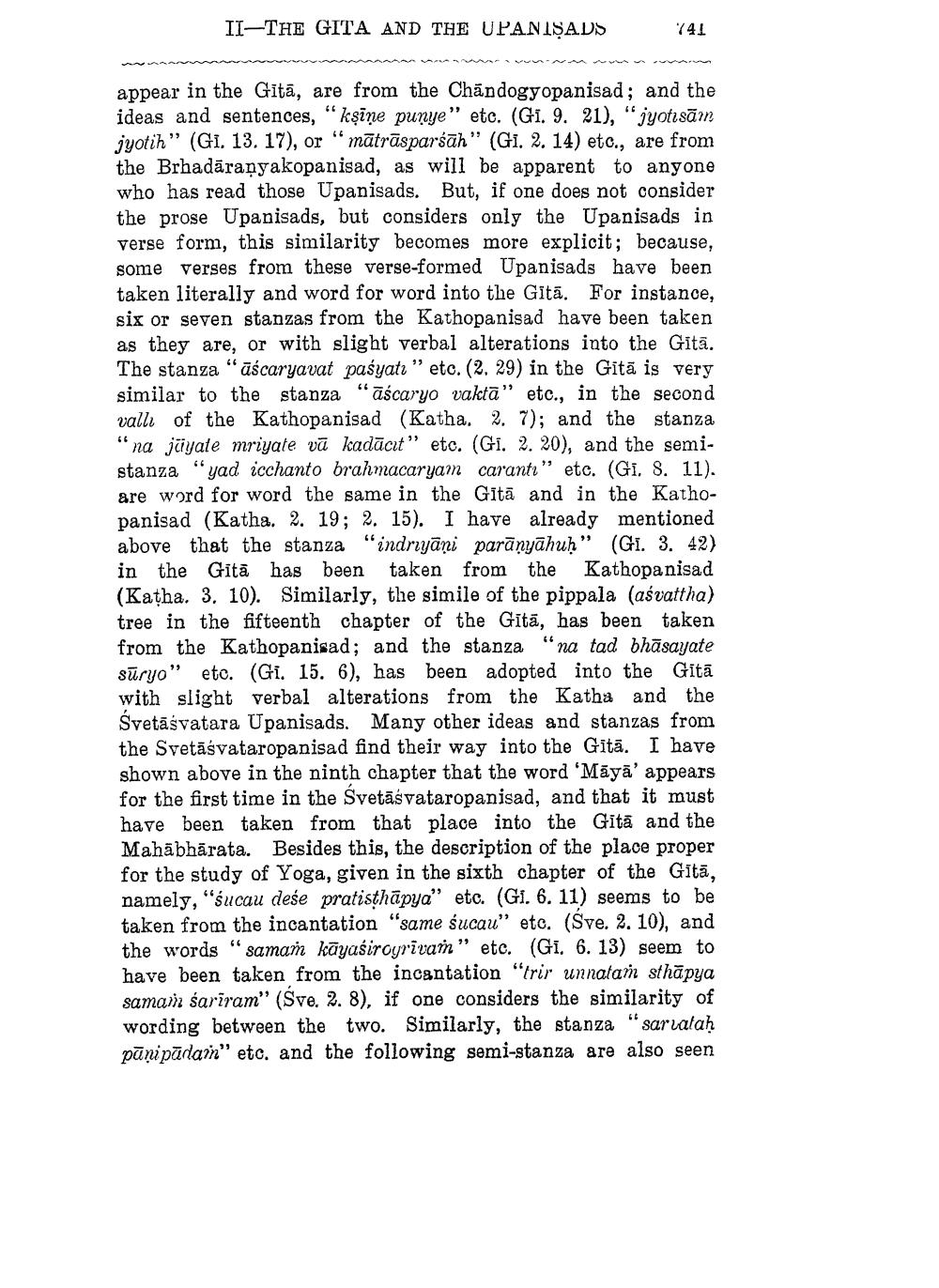________________
II-THE GITA AND THE UPANIŞADS
741
appear in the Gītā, are from the Chăndogyopanisad; and the ideas and sentences, “kşîne punye" etc. (G1. 9. 21), "jyotisām jyotih" (Gi. 13. 17), or "mātrāsparśāh" (Gi. 2. 14) etc., are from the Brhadāraṇyakopanisad, as will be apparent to anyone who has read those Upanisads. But, if one does not consider the prose Upanisads, but considers only the Upanisads in verse form, this similarity becomes more explicit; because, some verses from these verse-formed Upanisads have been taken literally and word for word into the Gitā. For instance, six or seven stanzas from the Kathopanisad have been taken as they are, or with slight verbal alterations into the Gitā. The stanza "āścaryavat paśyatı” etc. (2, 29) in the Gītā is very similar to the stanza"āścaryo vaktā" etc., in the second vallı of the Kathopanisad (Katha. 2. 7); and the stanza "na jüyale mriyate vā kadācıt" etc. (Gi. 2. 20), and the semistanza "yad icchanto brahmacaryam caranti" etc. (Gi. S. 11). are word for word the same in the Gītā and in the Kathopanisad (Katha. 2. 19; 2. 15). I have already mentioned above that the stanza “indryāņi parānyāhuh" (Gi. 3. 42) in the Gitā has been taken from the Kathopanisad (Katha. 3. 10). Similarly, the simile of the pippala (asvattha) tree in the fifteenth chapter of the Gītā, has been taken from the Kathopanisad; and the stanza "na tad bhāsayate sūryo" etc. (Gi. 15. 6), has been adopted into the Gitā with slight verbal alterations from the Katha and the Svetāśvatara Upanisads. Many other ideas and stanzas from the Svetāśvataropanisad find their way into the Gītā. I have shown above in the ninth chapter that the word 'Māyā' appears for the first time in the Svetāśvataropanisad, and that it must have been taken from that place into the Gītā and the Mahābhārata. Besides this, the description of the place proper for the study of Yoga, given in the sixth chapter of the Gītā, namely, "sucau dese pratisthāpya" etc. (GI. 6. 11) seems to be taken from the incantation "same sucau" etc. (Sve. 2. 10), and the words "samam kāyasiroyrīvam" etc. (Gi. 6. 13) seem to have been taken from the incantation "frir unnatam sthāpya samam sariram" (Sve. 2. 8), if one considers the similarity of wording between the two. Similarly, the stanza" sarvatah pānipādan" etc. and the following semi-stanza are also seen




